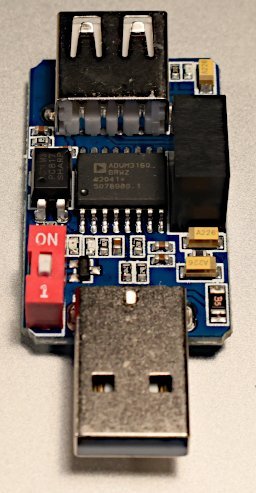enorton1379
Member
Hi All,
I recently purchased the Teensy 4.1 and I like it. There are a few things I'd like to ask and possibly need some help with. I want to incorporate the MIMXRT1062 device into my design and I would like to add the Teensy loader chip as well if that is ok to do? I don't want to cause any trouble and figure I ask before even attempting to do it. If it is possible, can you share information about doing this?
Since my design is going to be an industrial board, I need to have the USB interface isolated from the PC side. There are two ways I can see doing this. One is using a CP2102N USB to serial device which I do now on production boards I already make and use a RX and TX line isolator chip which works well OR use a high-speed USB isolator. There are only two available or almost available for high speed 480 mbps data rate but they are expensive and not available for sale until next year.
I really want to go with the USB to serial chip and isolate the RX and TX and then feed that into the MIMXRT1062 device. The UART speed is 115200 baud which is slow. Can I use the LPUART to upload new code to the MIMXRT1062 through the Teensy loader application? If not is there a way to do this through command line or something and then I can write a program in Visual C# to communicate with the bootloader? Also, can I change the loader application to say Vms Bootloader or something like that? Can I pay to have it done? It looks like NXP did something in Python but it is rather complex, and I don't know Python. Also, NXP engineers are hard to get anything beneficial from. All I want is something simple for my customers to upload new firmware to their boards in the field and I want it to have my company name etc. I will not need any security because I already use the ATSHA204 to protect my designs.
Any help with the above would be great.
Thanks,
Eric Norton
I recently purchased the Teensy 4.1 and I like it. There are a few things I'd like to ask and possibly need some help with. I want to incorporate the MIMXRT1062 device into my design and I would like to add the Teensy loader chip as well if that is ok to do? I don't want to cause any trouble and figure I ask before even attempting to do it. If it is possible, can you share information about doing this?
Since my design is going to be an industrial board, I need to have the USB interface isolated from the PC side. There are two ways I can see doing this. One is using a CP2102N USB to serial device which I do now on production boards I already make and use a RX and TX line isolator chip which works well OR use a high-speed USB isolator. There are only two available or almost available for high speed 480 mbps data rate but they are expensive and not available for sale until next year.
I really want to go with the USB to serial chip and isolate the RX and TX and then feed that into the MIMXRT1062 device. The UART speed is 115200 baud which is slow. Can I use the LPUART to upload new code to the MIMXRT1062 through the Teensy loader application? If not is there a way to do this through command line or something and then I can write a program in Visual C# to communicate with the bootloader? Also, can I change the loader application to say Vms Bootloader or something like that? Can I pay to have it done? It looks like NXP did something in Python but it is rather complex, and I don't know Python. Also, NXP engineers are hard to get anything beneficial from. All I want is something simple for my customers to upload new firmware to their boards in the field and I want it to have my company name etc. I will not need any security because I already use the ATSHA204 to protect my designs.
Any help with the above would be great.
Thanks,
Eric Norton


